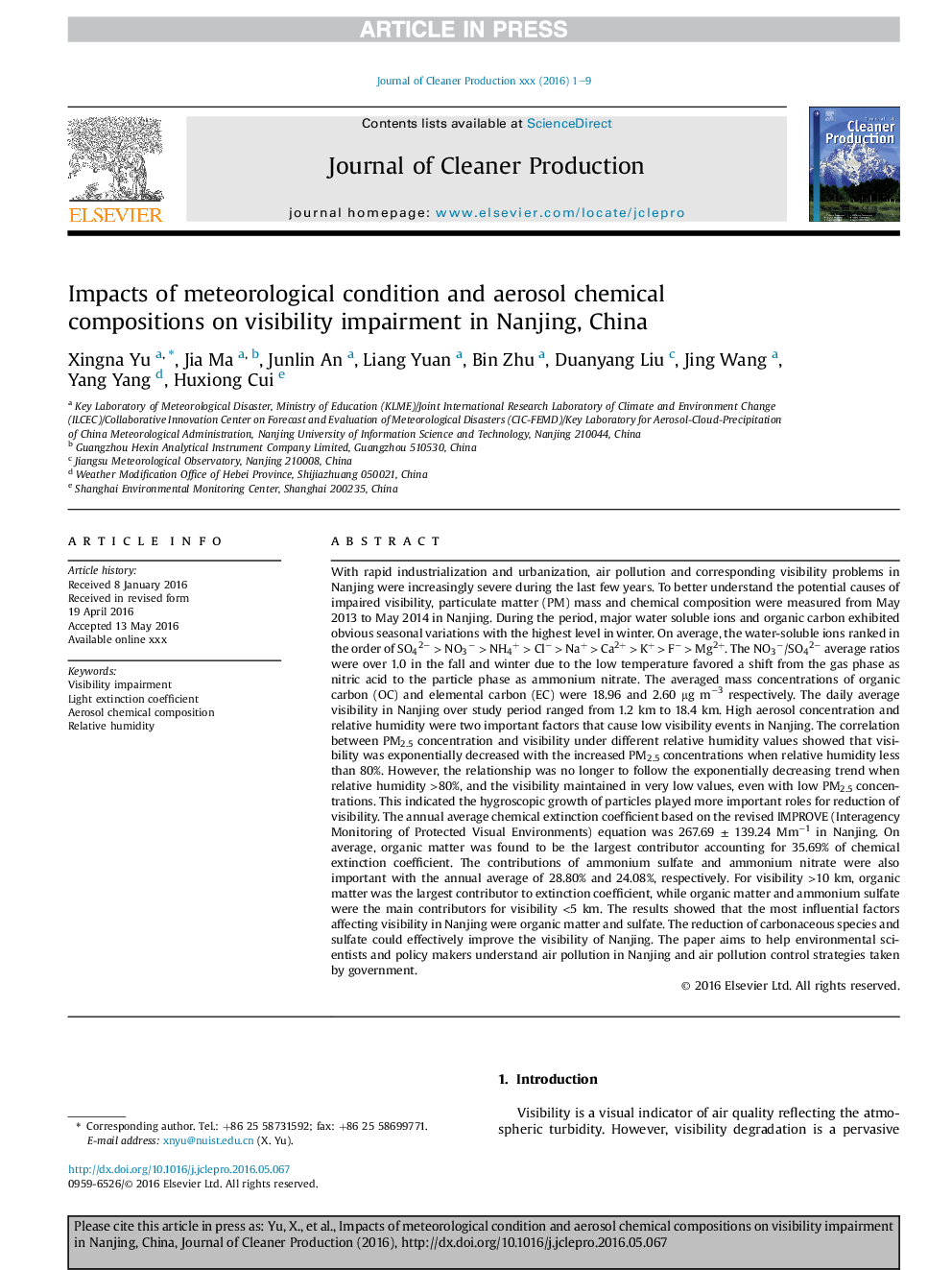| کد مقاله | کد نشریه | سال انتشار | مقاله انگلیسی | نسخه تمام متن |
|---|---|---|---|---|
| 8101557 | 1522118 | 2016 | 9 صفحه PDF | دانلود رایگان |
عنوان انگلیسی مقاله ISI
Impacts of meteorological condition and aerosol chemical compositions on visibility impairment in Nanjing, China
ترجمه فارسی عنوان
تأثیر شرایط هواشناسی و ترکیب شیمیایی آئروسل در نقص دید در نانجینگ، چین
دانلود مقاله + سفارش ترجمه
دانلود مقاله ISI انگلیسی
رایگان برای ایرانیان
کلمات کلیدی
آسیب دیدگی، ضریب انقراض نور، ترکیب شیمیایی آئروسل، رطوبت نسبی،
موضوعات مرتبط
مهندسی و علوم پایه
مهندسی انرژی
انرژی های تجدید پذیر، توسعه پایدار و محیط زیست
چکیده انگلیسی
With rapid industrialization and urbanization, air pollution and corresponding visibility problems in Nanjing were increasingly severe during the last few years. To better understand the potential causes of impaired visibility, particulate matter (PM) mass and chemical composition were measured from May 2013 to May 2014 in Nanjing. During the period, major water soluble ions and organic carbon exhibited obvious seasonal variations with the highest level in winter. On average, the water-soluble ions ranked in the order of SO42â > NO3â > NH4+ > Clâ > Na+ > Ca2+ > K+ > Fâ > Mg2+. The NO3â/SO42â average ratios were over 1.0 in the fall and winter due to the low temperature favored a shift from the gas phase as nitric acid to the particle phase as ammonium nitrate. The averaged mass concentrations of organic carbon (OC) and elemental carbon (EC) were 18.96 and 2.60 μg mâ3 respectively. The daily average visibility in Nanjing over study period ranged from 1.2 km to 18.4 km. High aerosol concentration and relative humidity were two important factors that cause low visibility events in Nanjing. The correlation between PM2.5 concentration and visibility under different relative humidity values showed that visibility was exponentially decreased with the increased PM2.5 concentrations when relative humidity less than 80%. However, the relationship was no longer to follow the exponentially decreasing trend when relative humidity >80%, and the visibility maintained in very low values, even with low PM2.5 concentrations. This indicated the hygroscopic growth of particles played more important roles for reduction of visibility. The annual average chemical extinction coefficient based on the revised IMPROVE (Interagency Monitoring of Protected Visual Environments) equation was 267.69 ± 139.24 Mmâ1 in Nanjing. On average, organic matter was found to be the largest contributor accounting for 35.69% of chemical extinction coefficient. The contributions of ammonium sulfate and ammonium nitrate were also important with the annual average of 28.80% and 24.08%, respectively. For visibility >10 km, organic matter was the largest contributor to extinction coefficient, while organic matter and ammonium sulfate were the main contributors for visibility <5 km. The results showed that the most influential factors affecting visibility in Nanjing were organic matter and sulfate. The reduction of carbonaceous species and sulfate could effectively improve the visibility of Nanjing. The paper aims to help environmental scientists and policy makers understand air pollution in Nanjing and air pollution control strategies taken by government.
ناشر
Database: Elsevier - ScienceDirect (ساینس دایرکت)
Journal: Journal of Cleaner Production - Volume 131, 10 September 2016, Pages 112-120
Journal: Journal of Cleaner Production - Volume 131, 10 September 2016, Pages 112-120
نویسندگان
Xingna Yu, Jia Ma, Junlin An, Liang Yuan, Bin Zhu, Duanyang Liu, Jing Wang, Yang Yang, Huxiong Cui,
